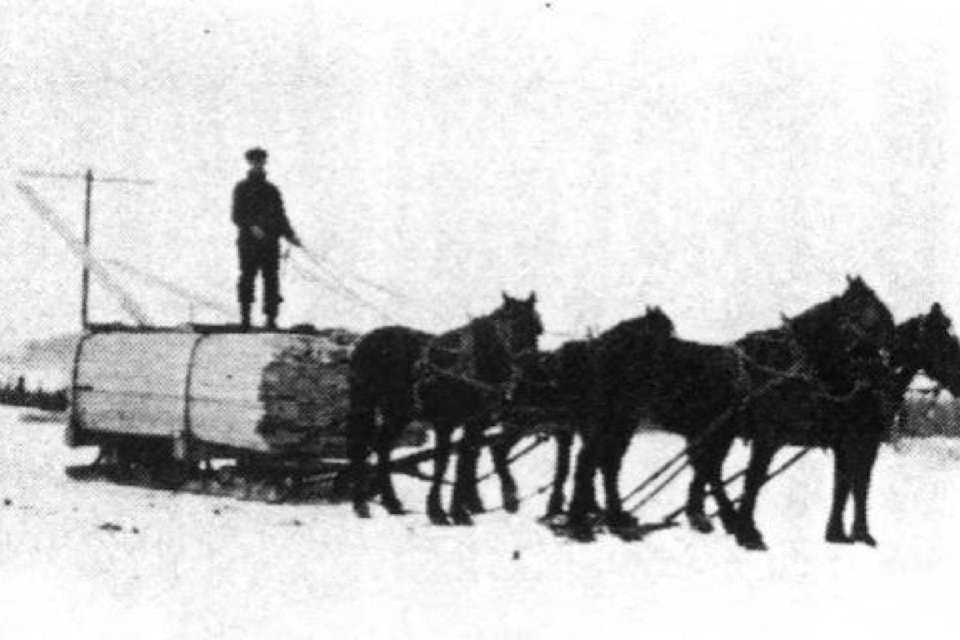By Craig Baird for The Wetaskiwin Pipestone Flyer
For communities on the rise, like Millet was at the turn of the 20th century, lumber was crucial. In order to build homes, hotels, businesses and more, lumber was needed and that usually meant hauling lumber into the sawmill. For many homesteaders, this presented the opportunity to make some money outside of the usual farming.
To that end, two men by the name of P.J. Mullen and Ferguson obtained a timber berth and built a sawmill near Mulhurst. They quickly began chopping down trees and a small logging camp sprang up. When horses were not needed on the farm, they were used to haul lumber to Millet.
In Autumn and spring, wagons were typically used to haul the lumber but by winter, steel shod sleighs were the standard mode of transportation. In order to ensure the horses had everything they needed to haul the lumber; a blacksmith shop was set up right in the timber camp. This ensured a ready supply of horseshoes, which did not take long to wear smooth after the long haul of timber.
In order to haul the lumber, workers would leave about 2 to 3 a.m. with a team of horses, and the wagon gear, which included bundles of hair, blankets, sandwiches, a bag of oats and more, depending on the season. With a lot of hauling happening in winter, blankets were crucial.
By noon, the horses would be fed, and the men would begin eating their sandwiches. Sometimes in the winter this meant thawing the sandwiches over an open fire, while also boiling a pot of snow to get drinking water. For many men, this rest was crucial because they had spent the past nine or 10 hours walking behind the wagon in bitterly cold temperatures.
Once the men would reach the sawmill later in the day, the horses would be fed, and the men would rest. Supper would be had at the cookhouse and the men would sleep at the bunkhouse at the sawmill.
The next day, it would be an early breakfast and then the trip to Millet would begin. In the winter, sleigh runners had to be pried loose from the frozen snow with a crowbar, adding an extra dimension of hard work to the entire process.
In all, the trip would typically take one day out and two days back.
Once in millet, the lumber would be unloaded and piled onto railcars, or used in the community.
For farmers with smaller operations, portable sawmills would be set up to haul poplar and birch logs to and from the logging site and Millet.
Without those long, often cold journeys, the community of Millet would not have had the lumber it needed to build itself up.
Suggestions for columns or questions? E-mail Craig at crwbaird@gmail.com. Listen to his podcast by searching for “Canadian History Ehx” on your podcast platform. Find his show on YouTube by searching for “Canadian History Ehx”.
Information for this column comes from Tales and Trails of Millet Volume 1.
